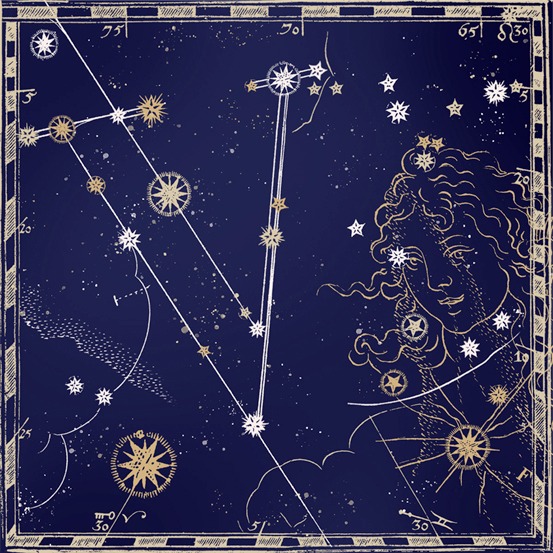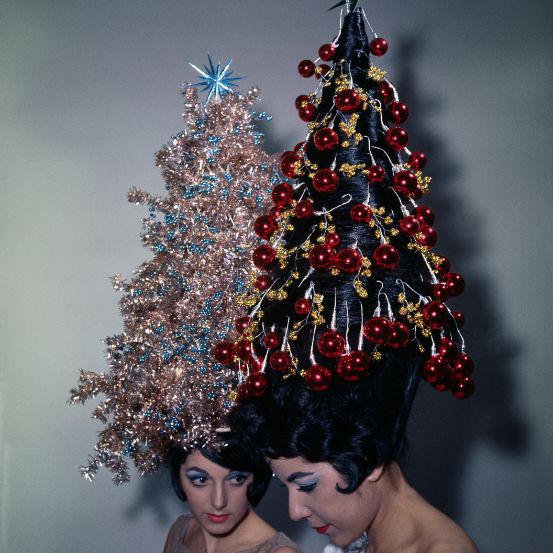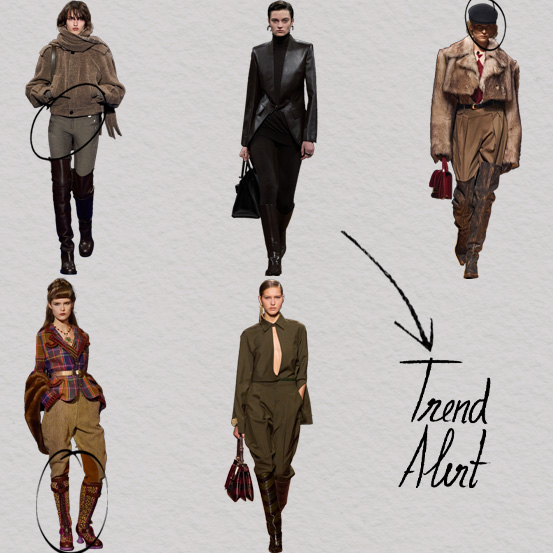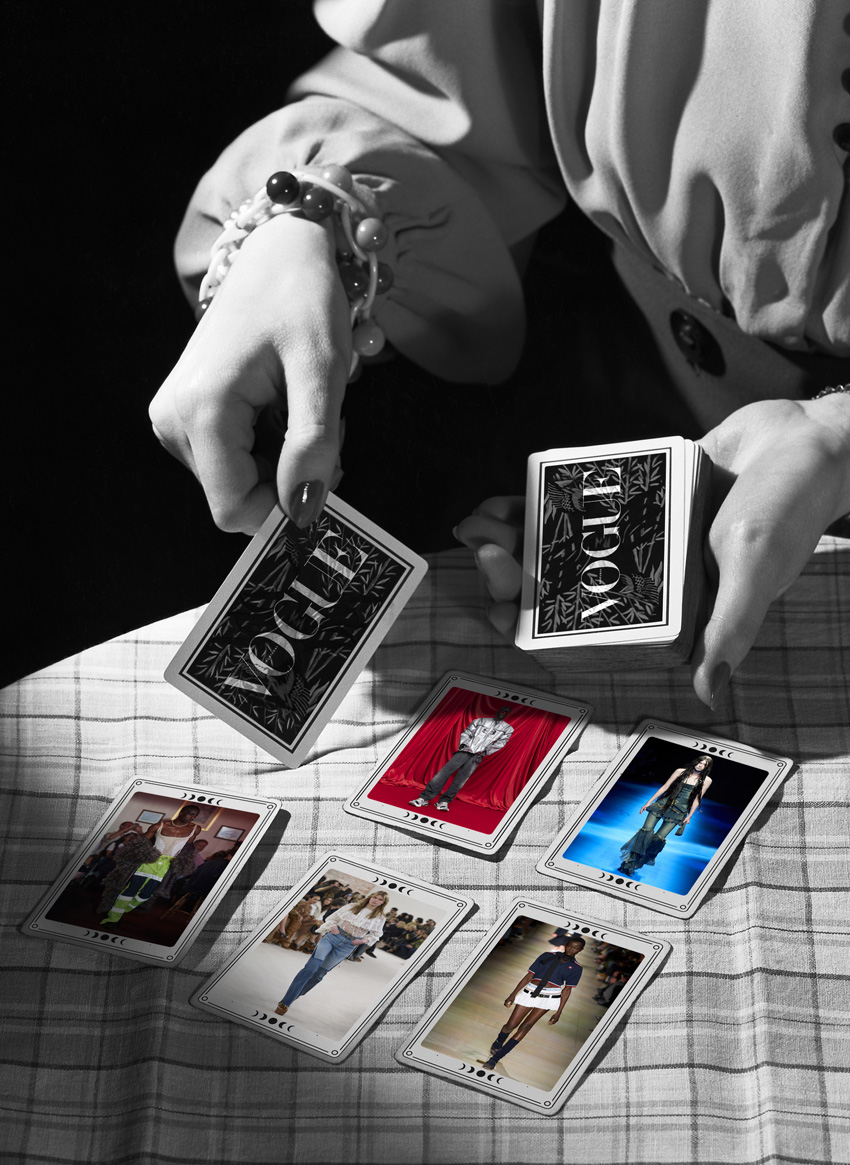The Mystery Issue
The cult is gathered and the candles are lit. How do the fashion gods decide what will become a trend?
In a dark room, hooded figures sit around a circular table. By candlelight, these mysterious people remove their disguises to reveal themselves. They show the faces of the creative directors of the most important fashion houses, the editors of the best-known magazines, the celebrities who lend their bodies to the cause of fashion, the newly arrived influencers — all gathered together. But what is the reason for this mysterious meeting? The answer should be obvious: just months before the end of the year, these characters gather to determine the next trends for the year ahead. Well, that's at least the fantasy that is conjured up when we think about the mystery of trends. The way fashion reaches the public is so determined. In what seems like overnight, a new trend emerges. The mystery behind these is understandable, the industry is known for its mythology, something it fosters through its recreational fantasies. The intentional mystery is the father of the enigma that arises around the fateful trends. In the fog of this uncertainty, stories emerge. Yes, some are similar to the truth, others are pure fantasies.
“You go into your closet and pick out a blue sweater because you're trying to communicate to the world that you take yourself too seriously to care about your clothes. But what you don't know is that it's not blue, it's not turquoise, it's not lapis lazuli, it's cerulean.” We can recite Miranda Priestly's speech almost in its entirety without the need for secondary sources. The film, which provides an objectively exaggerated version, also creates a resolution to the mystery of trends. “You also don't know that, in 2002, Oscar de la Renta did a collection of cerulean dresses, and then I think it was Yves Saint Laurent, wasn't it... who showed military jackets in cerulean. And then cerulean quickly appeared in the collections of eight different designers.” What the director of the fictional Runway magazine describes is one of the theories that explain the birth of trends - the so-called “trickle-down effect”. According to this theory, the designers at the top of the fashion hierarchy make creative decisions based on their genius. After divine communications, these prophets tell us common folk what can be considered beautiful. What kind of pants should I wear? What shoes are “in”? Should I wear accessories or are we in a minimalist phase? These questions, which only a designer can answer, are part of this theory. Eventually, inspired by what is seen on the catwalk, more accessible brands make alternatives (the infamous dupes) for those who can't afford luxury pieces. This is how Miranda Priestly's speech continues: “Then it passed through the department stores and ended up in a tragic casual corner where it was no doubt fished out of some bin. However, that blue represents millions of dollars of countless jobs, and it's a bit comical to think that you've made a choice that exempts you from the fashion industry when, in fact, you're wearing a sweater that was selected for you by the people in this room... from a pile of 'stuff'.” Well, this idea, although obviously exaggerated for cinematic purposes, is nonetheless realistic.
One visit to any fast fashion store with a rudimentary knowledge of what was on the catwalks last season and all our certainties grow — the influence of the top of the fashion food chain is felt at the bottom. If the idea is hard to visualize, take Chloé's autumn/winter 2024 collection as an example. This was the first by Chemena Kamali, the latest recruit in a long (and legendary) line of designers. Before Kamali came on board, the brand was at something of a standstill. The boho sensibilities of the 70s were lost in the vision of the designers who preceded the current creative director. Not that you can blame them — Gabriella Hearst is a godsend to the world — it was just a matter of trends. The boho chic of the 2010s reached its peak and, as it passed its climax, it stopped being cool. For a brand that lived by associating itself with the aesthetic, it was difficult to find a new visual identity to call home. This is where Kamali excelled. The timing of her position, as well as her rebellious attitude towards what might or might not be considered interesting, led the creative director to revive boho from its grave. This necromantic act materialized in maxi dresses that floated as the models walked, or in leather capes with exaggerated ruffles. Kamali's notions of boho weren't just based on her 1970s origins — let alone her 2010s revival — they were a new entry in the history of the visual movement. Her idiosyncratic courage inspired more than media success, it also prompted several accessible fashion brands to recreate some of her pieces. Recreate is the most loving verb we can find for what are obvious copies. Of course, the point of this story is not imitation (we've given up on being polite), but inspiration. Kamali did something new that signaled to the industry that a change was coming. Boho is officially back, there's no denying that. The success of Kamali and the affordable dupes, as well as the presence of the aesthetic at other shows — most notably Saint Laurent's this season — signaled the ressurgence of the trend. Of course, this isn't the only example; Miuccia Prada's effect is palpable throughout the industry, from the highest luxury to the most accessible fast fashion. Of the two brands under the designer's creative direction, Miu Miu in particular has been the inspiration for many. Its aesthetic is easily imitated but instantly recognizable. The preppy, slightly quirky style, with creative layering, is youthful yet serious. This duality has spread the popularity of its design and made it a worldwide sensation.
If these arguments and examples support the thesis of The Devil Wears Prada (2006), this is still a simplification of reality. In fact, trends like those created by Miuccia Prada or revived by Chemena Kamali are rare and involve much more than just a designer. From this point of view, consumers are nothing more than puppets controlled by designers and fashion editors, dependent on their opinions to dress themselves every day. If we follow Miranda Priestly's speech, a blue sweater isn't clothing, it's fashion determinism. The reality of the world has always been more complex than its cinematic representation. In the age of social media, the idea that only those at the top of the fashion hierarchy have the power to determine what is fashionable is antiquated at best — and false at worst. Complementing the trickle-down idea is the bubble-up theory. If in the past how fashion trends “moved down” the socio-economic classes was associated with the latent desire of the lower classes to move up, this new theory focuses on the current social reality. The advent of social media has made fashion idols pay attention like never before to trends that develop among subcultures. Although these have been a reference point for the fashion industry since the 1960s — think of aesthetics like punk or grudge — platforms like Instagram or TikTok have elevated the notion to a new stratosphere. However, the process itself hasn't changed much: the masses started wearing a certain style of clothing as a symbol of originality. As its popularity grows, its use extends beyond the initial subculture. Eventually, people from the “outside” begin to participate in this trend, not as a symbol of the subculture, but as a mere aesthetic statement. This movement continues until it reaches the upper socio-economic class. To meet their customers' demands, luxury brands have no choice but to reproduce something that is not original to them, but which will certainly be profitable (the desire to seek the customer, instead of having it seek the brand, is likewise a symbol of our times). Think of Virgil Abloh who, through Off-White and later Louis Vuitton, introduced streetwear to a world that had previously vehemently rejected it. The Gvasalia brothers, through Vetements and later Balenciaga, also put streetwear on a podium previously reserved for haute couture inventions. What they did wasn't necessarily easy, but it was natural for an industry that needs originality to survive. From the bottom up or the top down, the phenomenon of trends is curious but not hidden. No matter how much we want to blame some kind of freemasonry, its explanation is always more logical, with a much more predictable origin. Even the most nebulous ones don't come out of nowhere, nor are they orchestrated by mysterious cults. We guarantee that there are no Illuminati meetings - or at least we can assure you we haven’t been invited.
Originally translated from The Mystery Issue, published October 2024. Full credits and stories are in the print issue.
Most popular


Relacionados
 (14).png)





 (15).png)